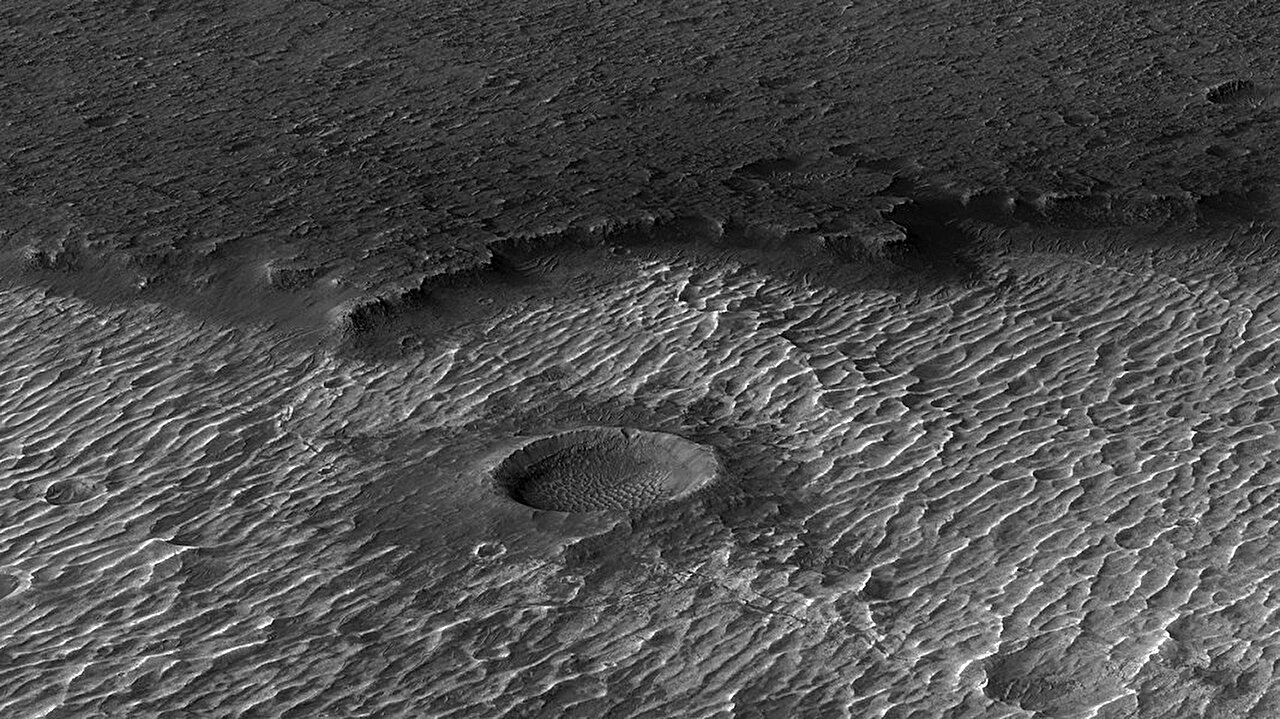Scientists are studying what fossils hide beneath the many different landforms on Mars. Recently, they have learned a lot about the past of this planet.

Ancient landforms on Mars
Long ago, wind and water turned the malleable sand and sediment of Mars into dunes, ripples, and other landscape patterns called bedforms. Over billions of years, some of these landforms have turned into rocks — scientists call them paleo-bedforms. Frozen in time, changes occur only in the form of slow erosion by dust winds, burial by long-dated lava flows, or occasional meteorite falls.
A team of researchers led by Matthew Chojnacki, a senior scientist at the Planetary Science Institute, mapped and characterized paleo-bedforms across the Red Planet to better understand their diversity and Mars’ ancient climate. The paper was published in the journal Geomorphology.
Since 2013, Matthew Chojnacki has been working on the HiRISE project, a high-resolution imaging science experiment on NASA’s Mars Reconnaissance Orbiter, or MRO.
“I pulled together a collection of HiRISE images that had these weird features that looked like bedforms, but they were cratered and covered in rocks. They looked decrepit and fossilized,” Chojnacki said. “We wanted to investigate further.”
Paleo-dunes in the paleo-bedforms of Mars landscapes
Their study revealed paleo-bedforms in landscapes of all ages, latitudes, and geologic contexts, including craters, canyons, and basins. They can be divided into groups called paleo-dunes and paleo-megaripples, formed by wind; fluvial paleo-dunes, formed by water; and dune cast pits — paleo-dunes so eroded that only a shallow depression remains.
Paleo-bedforms have been found all over the planet, but most have been concentrated in Valles Marineris and Athabasca Valles, near the equator; Noctis Labyrinthus, west of Valles Marineris; Arcadia Planitia on the northern lowlands; Hellas Planitia in the Southern Hemisphere, and the highland-lowland transition between Arabia Terra and Apollinaris Mons.
The most common paleo-bedforms were paleo-megaripples,, which look like large fields of parallel ridges. These smaller shapes occur when the wind blows over large amounts of coarse sand.
Based on what the team knew about modern megaripples, they proposed an evolutionary model for these landforms: Wind first forms them and then stops, allowing the sand to solidify and cement into rock, leading to their preservation and eventual degradation.
Paleo-bedforms in Mars relief patterns
The rarest and most degraded paleo-bedforms were probably formed by ancient water, called fluvial paleo-bedforms. The team found them only in places thought to be remnants of ancient megafloods.
Chojnacki said he was surprised they didn’t find more of these fluvial paleo-bedforms.
“Mars has an abundance of dry river channels where more fluvial bedforms may have formed, but it appears their small size and channel infilling were not conducive for their preservation.” he said.
The team estimates that most paleo-bedforms were cemented in the geologic record about 2 billion years ago, which is relatively recent. Most bedforms were probably buried after they were formed and transported, probably by volcanic activity such as lava flows or ash, until erosion revealed them again, while others became cemented into the rock without ever being buried.
Migrating bedforms
“In other cases, active sand dunes along the north polar cap are migrating over older paleo-dunes, leading to their erosion. Seasonal ice can also erode the dunes,” Chojnacki said. “The variety of these bedforms speaks to the diversity of dynamics and conditions operating in the solar system.”
And now that this study has found a large sample of paleo-bedforms on Mars, the team hopes to discover modern dune fields that may be moving in a similar direction.
“While many bedforms on Mars are active and migrating today, other fields are static and show evidence for some sort of stabilization process that may eventually lead to lithification,” Chojnacki said. “Understanding this continuum will hopefully allow us to better understand the changing climatic conditions of the red planet.”
According to phys.org


